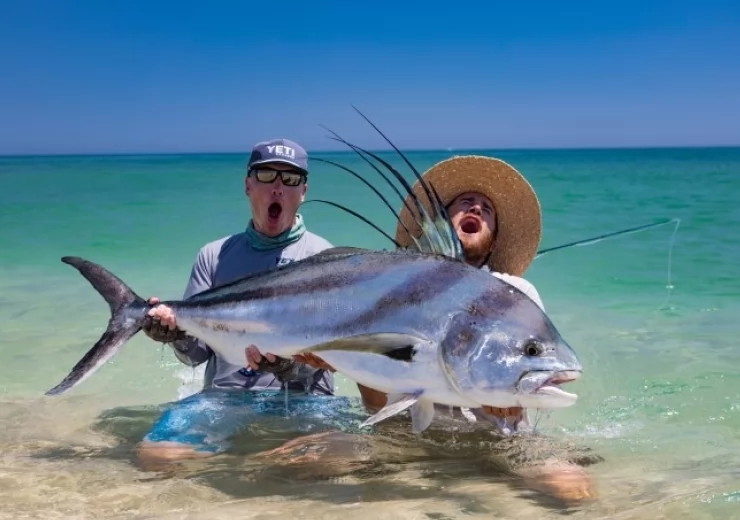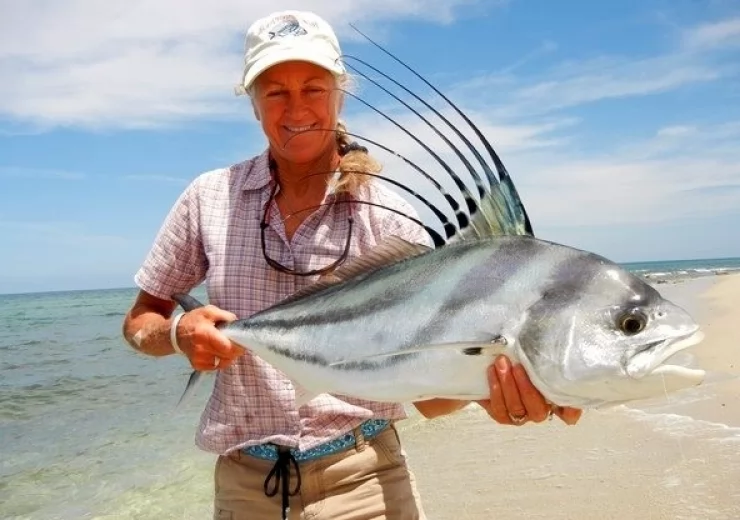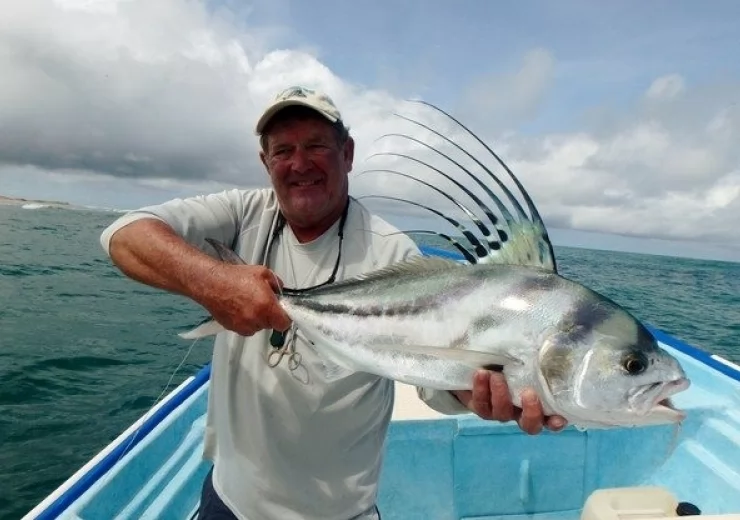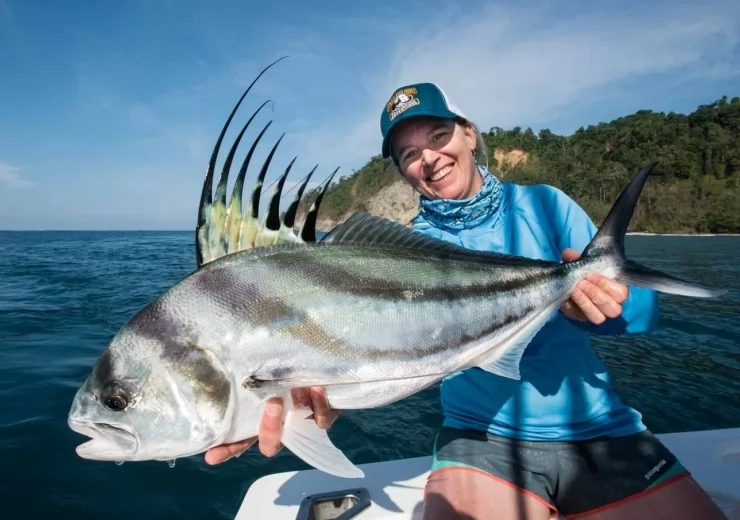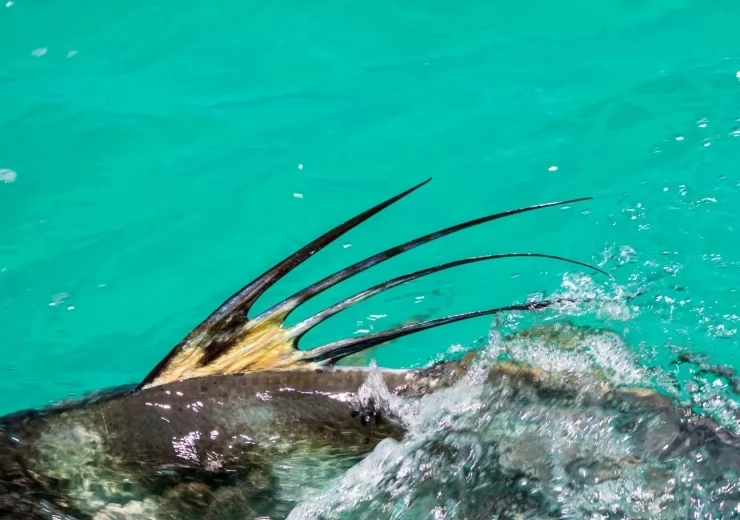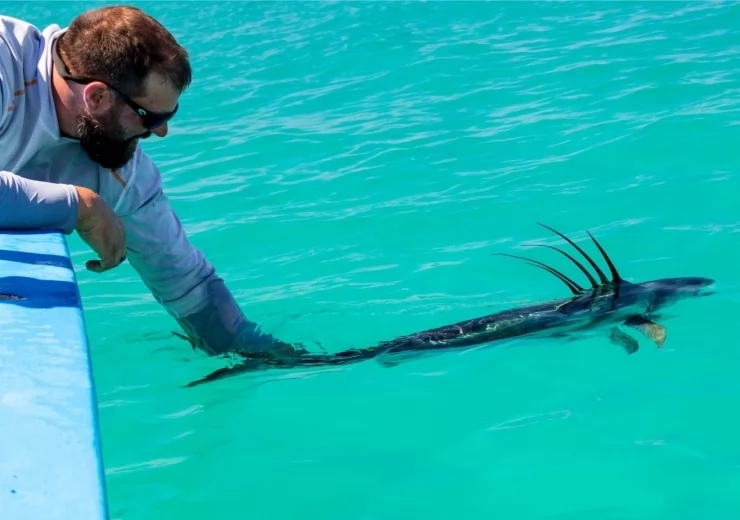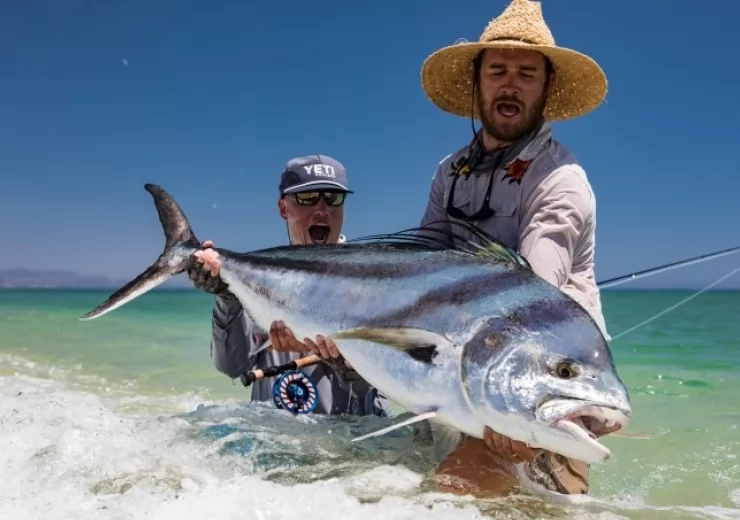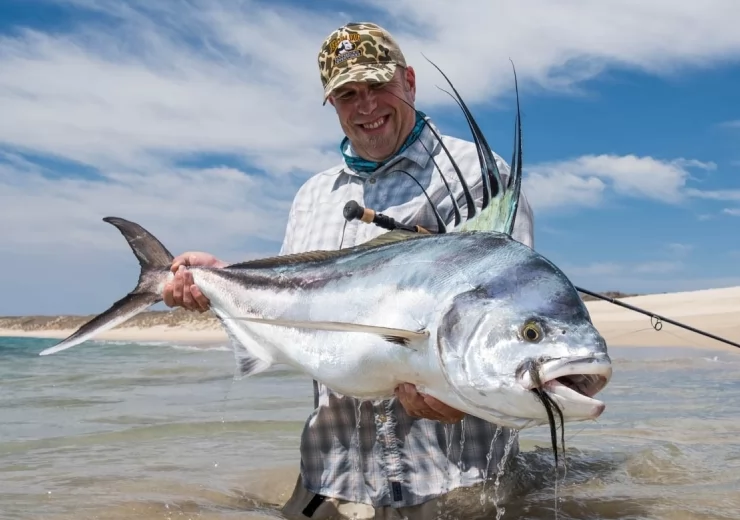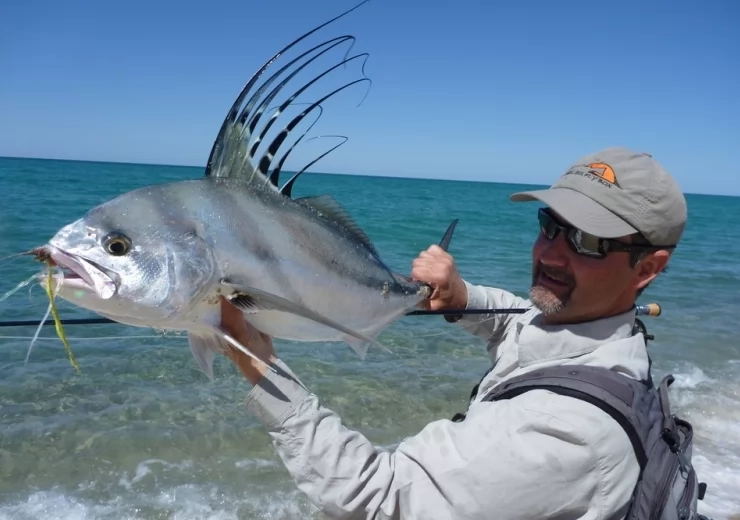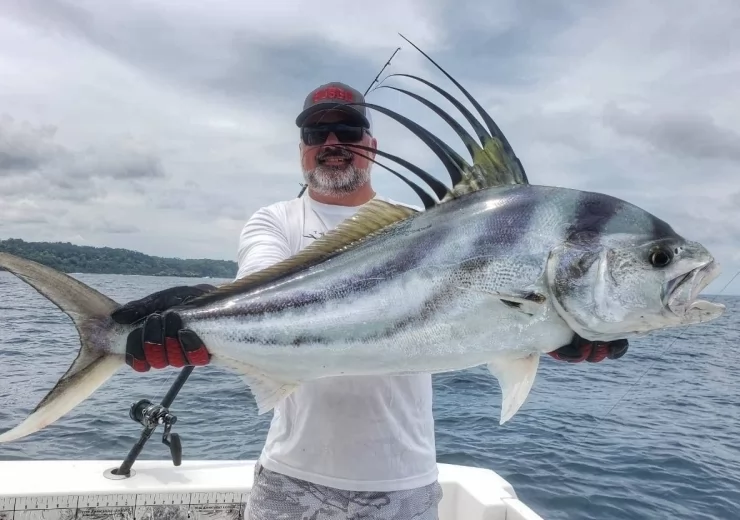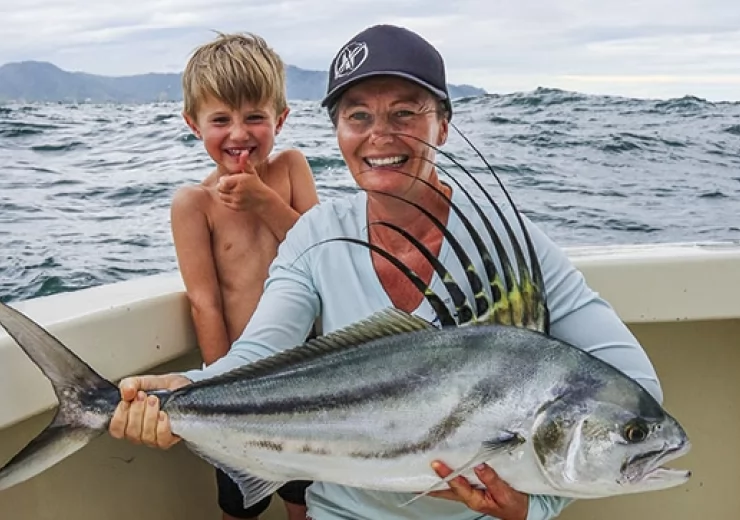Overview
HABITAT
Mexico’s Sea of Cortez is recognized as the penultimate proving ground for finding a roosterfish that will crush a fly. However, some of the largest roosterfish have been found along the coasts of Costa Rica and Panama, but very few of them caught on a fly rod there due to the fact the roosters tend to congregate around structure with surf.
They live in spectacular habitats of aqua-marine waters surrounded by crashing waves, rocky bottoms, and beaches usually backdropped by spectacular mountains.
FEEDING
Roosterfish are an aggressive and predatory inshore species. They primarily feed on other small fish like sardines, mullet fish, small bonito, and blue runners. They've been known to chase bait for a long time as if trying to herd them towards a reef or beach.
The fishing
When a foraging rooster is spotted, an angler must remain calm and collected while tapping into their own inner-predatory instincts. It often demands sprinting into casting range, then firing every cast possible to a fish, including a potential neck-deep double-haul while crashing waves slam saltwater in your face. Oh yeah, it is like that.
Roosters can also be targeted in deeper water out of a super panga where the guides use live bait and teasers to bring to the surface. Targeting roosters in this manner is a bit easier on the angler but the fish can be more selective.
Fly fishing for roosterfish is the pinnacle of angling patience, fly-fishing ability, and resolving complex chaos theory. And it all finishes well in the angling world because each day ends with a sunset and a few cold cervesas.
Gear and equipment
FLIES
An angler would think an apex predator such as a roosterfish would crush any fly in its wheelhouse, but, matching the available baitfish is very important. When fishing from the beach, roosters are more likely to hit a well-placed fly than when cast to from a panga—22 to 28 feet fishing boats used by local guides.
Small roosters usually feed on sardines and needlefish. Larger roosters want mullet, lady fish, mackerel, caballitos, and on some occasions will eat ballyhoo. These baitfish are all approximately 4 to 7 inches long, with some beach-cruising baitfish up to twelve inches. Choose colors to match the baitfish—sardines, ballyhoos, and mullet—in the area. If targeting fish from the beach, a mullet pattern with a spun deer hair head is a good first choice.
Here is a must-have list of flies to carry.
EP Rooster Fish Mullet. Size 3/0 and 4/0. The 4/0 mullet is THE beach fly for roosters.
EP Rooster Fish Sardina. Standard and tan size 3/0
EP Sardina. Size 3/0
EP Tinker Mackerel. Size 3/0
BEST GEAR FOR ROOSTERFISH
A stout rod and sturdy reel are essential. Many anglers use a 10 or 11-weight rod armed with a matching reel. Ensure the reel is loaded with at least 300 yards of durable 30 to 50-pound test backing. An 8-weight rod and appropriate reel with at least 300 yards of backing are good to have for smaller roosters and other species you might encounter.
A floating line with an intermediate sinking tip is required. Choose a line developed for the tropics and a fly line one line-weight heavier than your rod. Choose a line with a powerful front taper to help turn over big leaders and busy flies. Scientific Anglers Titan Tropical or your favorite sink-tip intermediate tarpon line are good choices. One of the most popular fly lines is the RIO Tropical Outbound Short and if fishing from panga anglers should also have a full sinking 300 -450-grain fly line as well like the RIO Leviathan
For leaders and tippets, travel with 40lb, 30lb and 20lb fluorocarbon and build your own tapered leaders. Some anglers like to have a 40lb fluorocarbon bite tippet as well, but often the 40-pound tippet is too fat and the roosters shy away forcing anglers to downsize to 20 lb.
Where to fish Rooster?
Mexico
Season: Fish can be chased year-round, but March-May and again in September and October see the most abundant fish numbers and best fishing conditions.
May and early June and again in October see the largest fish migrate through.
The winds tend to pick up on the East Cape from November thru mid-March but they can be targeted on the Pacific side.
The mid-summer dates of mid-July through August is the rainy season in Baja making visibility tough.
Costa Rica
Season: For Costa Rica roosterfish, December through May is the most popular time and consistent weather.

